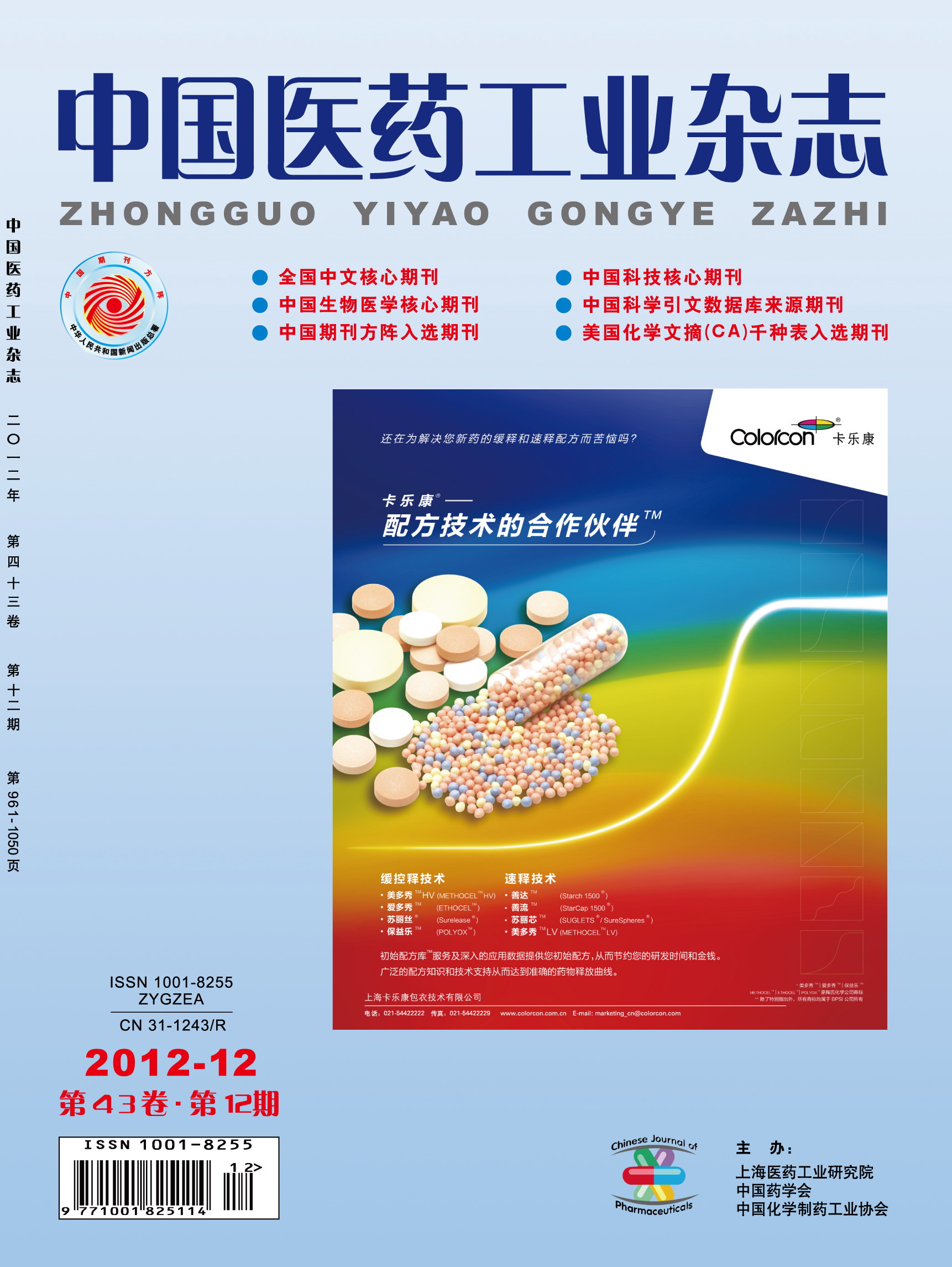ZHOU Wei, CHEN Fei, CHEN Ning, MAO Ke
2012, 43(12): 1003-1006.
The formulation of aprepitant emulsion for intravenous injection was optimized by single factor test and orthogonal design. The properties, such as appearance, particle size, ζ potential and stability of the product were investigated. The results showed that the type and amount of emulsifier as well as the amount of oleic acid had the greater effect on stability. The optimal formulation of aprepitant emulsion was as follows: aprepitant was 0.25%, soybean oil was 15%, egg yolk lecithin E80 was 2.5% and oleic acid was 0.125%. The appearance of the product was ivory. The average particle size, PDI, centrifugal stability constant (Ke), ζ potential, pH value and drug content of the product before and after sterilization were (218.71±1.26) and (220.3±0.53)nm, 0.203±0.016 and 0.210±0.009, 0.21±0.01 and 0.34±0.01,(-37.8±0.2) and (-37.6±0.8)mV, 7.21±0.23 and 7.31±0.30, (101.03±0.89)% and (101.12±1.20)%, respectively.
